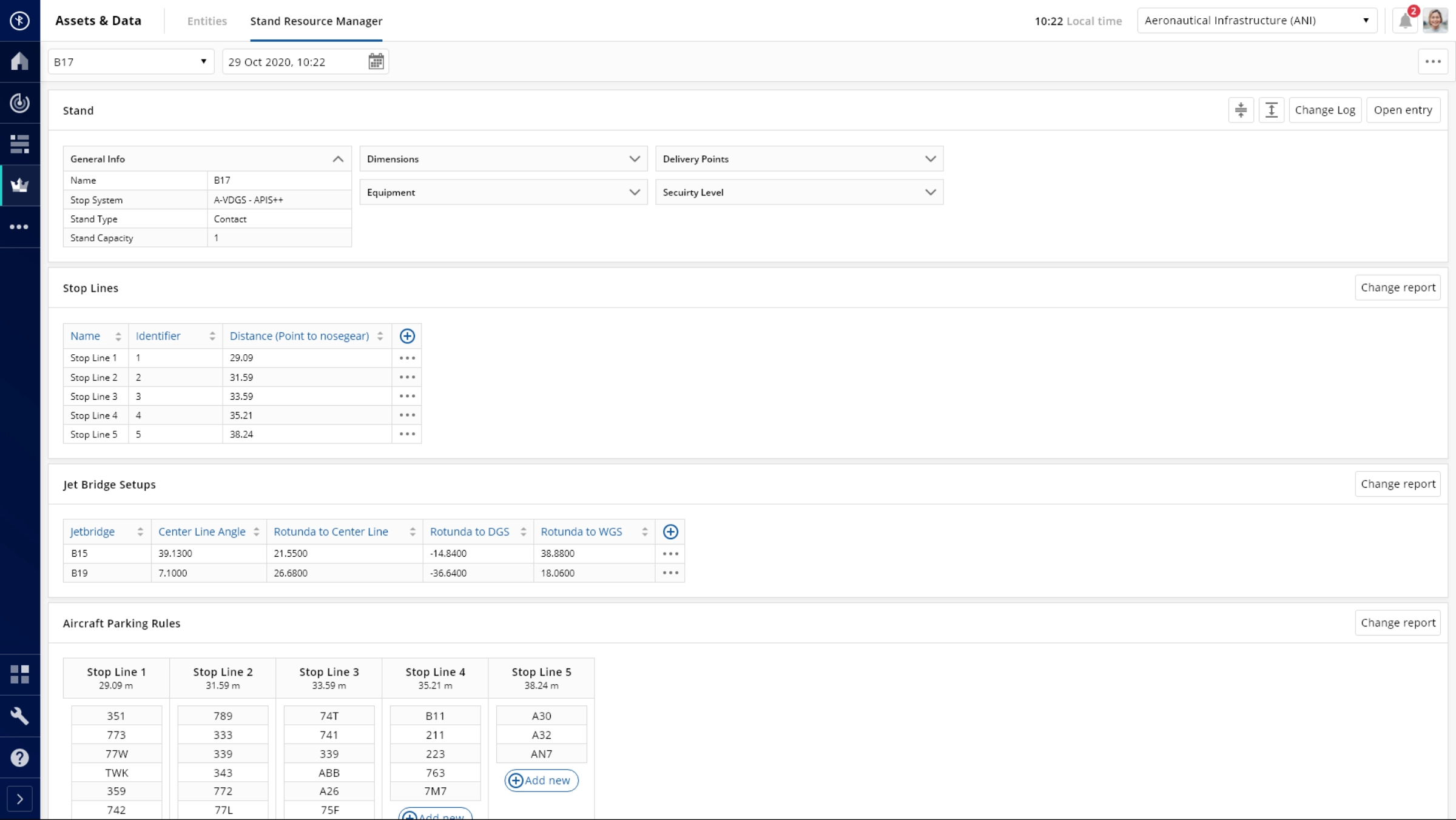Resource Allocation and Planning
Optimal planning, and correct allocation, of resources is vital to the efficient and safe operation of an airport. The AIRHART Resource Allocation and Planning module allows for registration of airport assets and capabilities related to aircraft parking. It supports resource allocation and impact assessments related to in-operative events too.
Key Functionality
The Resource Allocation and Planning module allows for the aeronautical infrastructure to be registered and allocated to flight operations.
- Easy registration of airport assets and relations, e.g. Gates, Stands, Jet Bridges and Equipment available.
- Greater management of Aircraft Parking Rules – which aircraft types can park at given stands, which stop lines and parking methods to use, and proper jet bridge positioning to reach aircraft doors.
- Registration and display of In-Operative status, e.g. planned maintenance, or operational outages.
- Open API for integration with external systems – expose assets and configurations to resource management systems and receive allocations to flight operations; provide operational data for Docking Guidance System and Jet Bridge units; and receive and expose (in-)operational status.

Benefits
The Resource Allocation and Planning module provides value by combining the asset registry with operational allocations. This enables:
- Clear visibility of resources and configurations, e.g. fuel pits and power supplies available at the stand allocated to a flight operation.
- Automatic identification of operational impacts, e.g. automatically requesting marshaller assistance to flight operations in case of malfunctioning Docking Guidance System.
- An overview of in-operative assets, displayed via the shared Operational Dashboard, for complete awareness from all stakeholders, e.g. alerting ground handlers to bring mobile equipment.
Future Perspectives
The Resource Allocation and Planning module is continuously being enhanced with new features and capabilities.
Optimisation, Planning and Allocation of Fixed and Mobile Resources:
- Stand, gates, check-in desks, baggage belts – utilise scheduled traffic plans, number of passengers, resource capabilities and operational status to achieve optimal resource utilisation and positive passenger experience.
- Mobile stairs, tow trucks, ground power and air conditioning units – utilise location tracking and geofencing to alert in case of non-optimal asset placements and prepare for rearrangements if needed for optimal handling of air traffic operations.
Optimisation and Planning of Preventive Maintenance and Facility Management:
- Optimise cleaning of restrooms, lounge areas or corridors by combining flight operations allocated to gates, number of passengers arriving/departing, location of gates and toilets/restrooms with estimated percentage of passengers utilising restrooms on arrival or departure.
- Mark resources as in-operative, or with reduced capacity, to prevent or restrict use during periods of maintenance.
